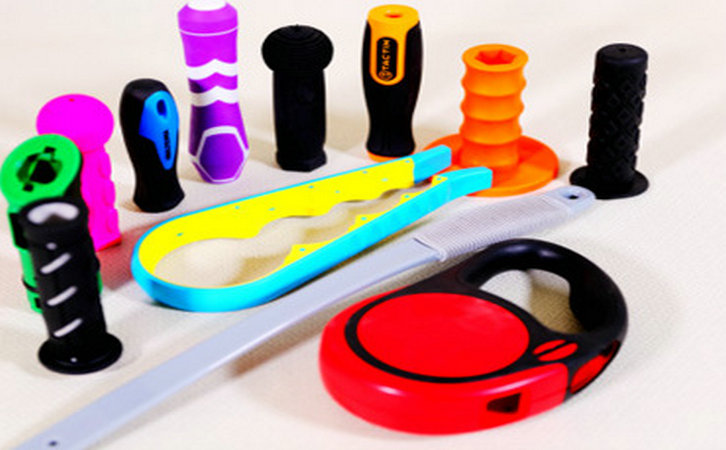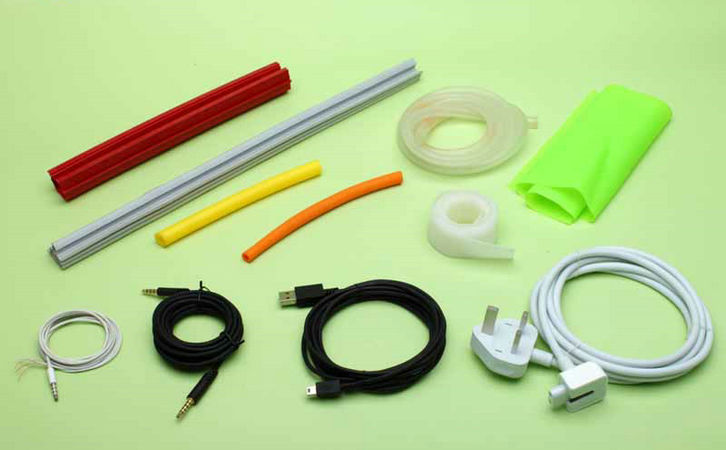Having spent years working in the field of thermoplastic elastomer (TPE) and engineering plastics composite processing, I’ve encountered my fair share of challenges, and one of the most persistent is poor adhesion between TPE and nylon. Whether you’re producing dual-material injection-molded parts or developing soft-hard composite products, weak bonding can lead to delamination, peeling, or even complete product failure. A few years back, I worked on an automotive component project where the client reported insufficient bonding strength between TPE soft material and a nylon substrate, causing frequent failures in durability tests. That experience prompted me to thoroughly investigate the technical aspects of TPE-nylon adhesion. In this article, I’ll share my insights, combining real-world cases and practical solutions to help you understand why adhesion fails and how to fix it effectively.

Why Does TPE Fail to Bond Well with Nylon? Digging into the Root Causes
TPE is valued for its softness, weather resistance, and ease of processing, making it a popular choice for combining with rigid materials like nylon (PA) in applications such as tool handles, seals, and electronic device casings. However, poor adhesion—evidenced by low peel strength or interfacial detachment—is a common issue when bonding TPE to nylon. The primary culprit lies in the chemical and physical differences between the two materials.
Nylon is a highly polar engineering plastic with high surface energy, while TPE (especially SEBS-based TPE) is typically non-polar with lower surface energy. This mismatch in molecular affinity makes it difficult to form a strong interfacial bond. In one project I handled, a client attempted to bond TPE to nylon through simple two-shot molding, but without proper surface treatment, the product peeled apart easily during pull tests. Based on my experience, here are the five main reasons for poor TPE-nylon adhesion:
Material Incompatibility: The chemical polarity difference between TPE and nylon results in weak interfacial bonding.
Inadequate Surface Preparation: Contaminants like oil, mold release agents, or excessive surface smoothness on nylon can hinder TPE adhesion.
Improper Processing Parameters: Incorrect injection temperature, pressure, or cooling time can compromise interface fusion.
Mold Design Issues: Poor mold surface roughness or structural design may reduce contact between TPE and nylon.
Environmental Factors: Fluctuations in production environment humidity or temperature can subtly affect adhesion.
To provide a clearer overview, I’ve created a table summarizing the causes and impact of poor TPE-nylon adhesion:
|
Cause |
Specific Manifestation |
Impact Level |
|---|---|---|
|
Material Incompatibility |
Polarity mismatch leading to weak bonding |
High |
|
Surface Preparation |
Oil, mold release agents, or overly smooth surface |
High |
|
Processing Parameters |
Low injection temperature, insufficient pressure |
Medium |
|
Mold Design |
Smooth mold surface or inadequate contact area |
Medium |
|
Environmental Factors |
High humidity, unstable temperature |
Low |
How to Solve Poor TPE-Nylon Adhesion?
When faced with weak TPE-nylon adhesion, randomly tweaking parameters or switching materials often yields poor results. Below, I outline a systematic approach to addressing the issue, covering material selection, surface preparation, processing optimization, and mold design.

1. Choose a TPE with Better Compatibility
The adhesion performance of TPE to nylon heavily depends on material compatibility. Modified TPEs (such as SEBS or TPU-based TPEs with polar functional groups) typically bond better with nylon. In a project involving a handle for an electronic device, we initially used a standard SEBS-based TPE, achieving a bonding strength of only 2N/mm—well below the client’s 5N/mm requirement. After consulting with the material supplier, we switched to a modified TPE designed specifically for nylon substrates, boosting the bonding strength to 6N/mm and resolving the issue.
Pro Tip: When selecting materials, always request adhesion test data from the supplier and confirm whether the TPE has been polar-modified. If feasible, conduct peel strength tests following the ASTM D903 standard.
2. Optimize Nylon Surface Preparation
The condition of the nylon surface directly affects TPE adhesion. Here are several effective surface preparation methods:
Mechanical Roughening: Use sandpaper or sandblasting to increase nylon surface roughness (aim for an Ra value of 1.6–3.2μm) to enhance mechanical interlocking.
Chemical Cleaning: Apply alcohol or specialized cleaners to remove oil, mold release agents, or other contaminants, ensuring a clean surface.
Plasma Treatment: Use low-temperature plasma equipment to activate the nylon surface, increasing surface energy and polar groups. In a medical device project, plasma treatment reduced the nylon surface contact angle from 70° to 30°, improving TPE bonding strength by 50%.
Primer Application: Apply a compatible adhesion promoter (primer) to the nylon surface to enhance chemical bonding with TPE. Ensure the primer matches the chemical composition of both TPE and nylon.

3. Fine-Tune Injection Molding Parameters
Injection molding parameters are critical for achieving strong TPE-nylon adhesion. Here are my recommendations for optimization:
Injection Temperature: TPE is typically molded at 160–220°C, while nylon (PA6/PA66) requires 230–280°C. Set the TPE injection temperature close to the nylon melting point (e.g., 200–210°C for PA6 at 220°C) to promote interfacial fusion.
Injection Pressure: Increase TPE injection pressure (80–120MPa) to ensure full filling and tight contact with the nylon surface.
Mold Temperature: Maintain the nylon-side mold temperature at 60–80°C and the TPE-side at 30–50°C to balance cooling rates and adhesion.
Holding Time: Extend TPE holding time (3–6 seconds) to ensure a stable interfacial bond.
In a project producing TPE-overmolded nylon gears, we noticed peeling at the bond interface. By raising the TPE injection temperature from 190°C to 205°C and extending holding time from 2 to 4 seconds, we improved bonding strength from 3N/mm to 5.5N/mm.
4. Optimize Mold Design
Mold design plays a pivotal role in adhesion quality. Consider these adjustments:
Increase Surface Roughness: Roughen the nylon-side mold surface via sandblasting or texturing to achieve an Ra value of 1.6–3.2μm, enhancing mechanical interlocking.
Incorporate Interlocking Features: Design grooves, protrusions, or undercuts on the nylon substrate to increase contact area and mechanical locking with TPE.
Optimize Runner and Gate Design: Ensure smooth TPE flow and position gates near the nylon bonding area to prevent premature material cooling.

5. Use Adhesives or Heat Treatment
If the above methods fall short, consider these supplementary approaches:
Specialized Adhesives: Apply TPE-compatible adhesives (e.g., cyanoacrylate or polyurethane-based) to the nylon surface to enhance chemical bonding.
Heat Treatment: Post-molding, anneal the product at low temperatures (80–100°C for 1–2 hours) to relieve interfacial stress and improve bond stability.
6. Control the Production Environment
Humidity significantly affects nylon, as it readily absorbs moisture, reducing surface polarity. Maintain workshop humidity at 50%–70% and temperature at 20–25°C. Additionally, dry nylon substrates before molding (80–100°C for 4–6 hours) to minimize moisture content.
Preventing Poor TPE-Nylon Adhesion: Proactive Strategies
Fixing adhesion issues is important, but preventing them from the start is even better. Here are my top preventive measures:
Pre-Production Testing: Conduct small-batch trial molding to evaluate TPE-nylon adhesion under different conditions.
Document Process Standards: Record optimized molding parameters and surface preparation methods in a Standard Operating Procedure (SOP) for consistency.
Regular Equipment Checks: Molding machines and molds must remain stable to ensure adhesion quality. Inspect equipment monthly.
Train the Team: Ensure operators understand the principles of TPE-nylon adhesion to avoid errors.

Real-World Case Study: From Adhesion Failure to Seamless Bonding
To illustrate how to overcome adhesion challenges, let me share a real case. We were tasked with producing a TPE-overmolded nylon tool handle for a client, requiring no delamination under high-stress use. Initial trials showed a TPE-PA66 bonding strength of just 1.5N/mm—far below the 4N/mm target—and the product delaminated during durability tests.
We tackled the issue through these steps:
Material Optimization: Switched to a modified TPU-based TPE designed for PA66, achieving a bonding strength of 4.5N/mm.
Surface Preparation: Applied plasma treatment to the nylon substrate and cleaned it with alcohol to remove contaminants.
Process Adjustments: Increased TPE injection temperature from 195°C to 210°C, extended holding time from 3 to 5 seconds, and lowered mold temperature from 50°C to 40°C.
Mold Enhancements: Added 0.5mm-deep grooves to the nylon substrate to improve mechanical interlocking.
After two trial rounds, bonding strength stabilized above 5N/mm, and the product passed all client tests. This case reinforced the importance of coordinated optimization across materials, surface preparation, processes, and mold design.

FAQs: Answering Your TPE-Nylon Adhesion Questions
To provide a comprehensive resource, I’ve compiled answers to common questions about TPE-nylon adhesion:
Q1: Can glue be used to fix poor TPE-nylon adhesion?
A: Yes, but only with adhesives compatible with both TPE and nylon (e.g., polyurethane or cyanoacrylate-based). However, glued bonds are less durable and consistent than optimized molding processes, so use glue as a supplementary measure.
Q2: How can I tell if the issue is material-related or surface-related?
A: Test different TPE materials or apply various surface treatments (e.g., roughening, plasma) to the nylon. If a modified TPE improves adhesion, it’s likely a material issue; if surface treatment helps, it’s a surface issue.
Q3: Does nylon moisture absorption affect adhesion?
A: Yes. Moisture reduces nylon’s surface polarity, weakening TPE adhesion. Dry nylon at 80–100°C for 4–6 hours before molding.
Q4: Is two-shot molding or overmolding better for TPE-nylon adhesion?
A: Two-shot molding is preferable, as it completes TPE-nylon bonding in a single process, ensuring better interfacial fusion. Overmolding may reduce adhesion due to nylon surface cooling.
Final Thoughts
Poor adhesion between TPE and nylon can feel like a daunting obstacle, but with a methodical approach focusing on materials, surface preparation, processes, and mold design, you can achieve strong, reliable bonds. As an engineer with years of hands-on experience, I’ve learned that every technical challenge is a chance to refine your skills. I hope this guide provides you with clear, actionable strategies to master TPE-nylon adhesion. If you encounter other challenges in your projects, feel free to reach out—I’d be happy to dive into the details and help you find solutions!




